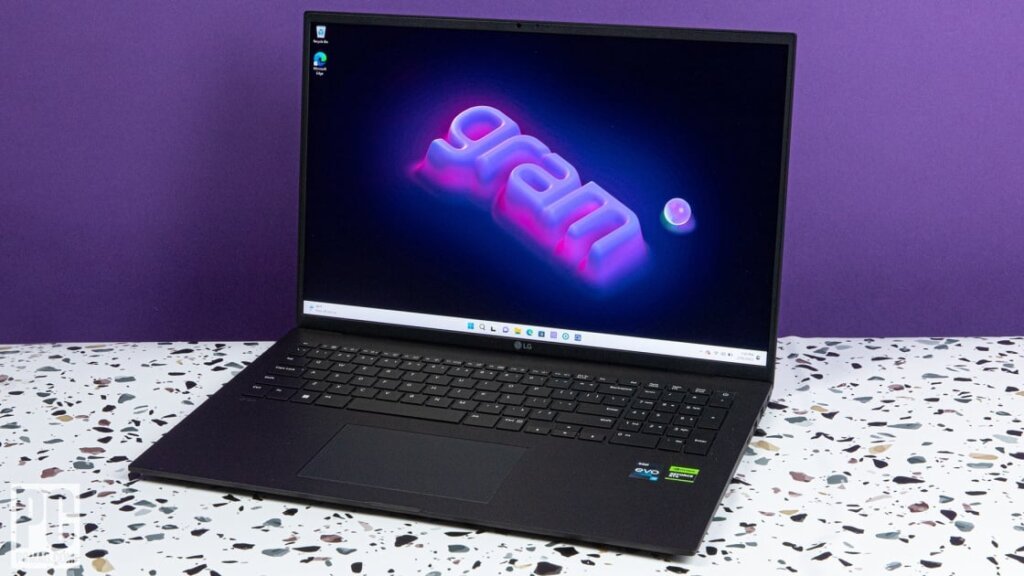As creatives—photographers, video editors, designers, animators—you live in the tension between power and portability. You want a machine that runs heavy software, yet doesn’t weigh down your bag or force you tethered to a desk. That’s where the promise of lightweight productivity laptops like the LG Gram Pro 17 comes in. But does it really deliver for demanding workflows? Let’s break it all down.

What is the LG Gram Pro 17?
The LG Gram Pro 17 is the flagship product of LG that makes an attempt to unite a huge screen (17 inch) and an ultra light body. The model 17Z90TP is very thin, as it weighs only ≈ 1,369 g (about 3.02 lbs) according to product specifications. It has a 17-inch 16:10 IPS screen with a 2,560 × 1,600 resolution, Intel core Ultra processors, LPDDR5x RAM, and high-speed NVMe Gen4 memory.
Simply put, LG is making a bet that creators will be willing to make trade-offs in order to bring a studio with them.
Strengths: Where the Gram Pro 17 Appeals to Creators
1. Portability without drastically sacrificing screen real estate
Space it has a 17 inch screen that provides you with work space, timeline view, large canvases, all the benefits when working with photos or video. Most of the 17-inch laptops are bulky. The Gram Pro 17 slices that bulk giving it a big canvas in a pocket size. It means that you can wear it without doubt about your shoulder or luggage carrying capacity.
2. Decent performance for many creative tasks
During the actual test, Gram Pro 17 was able to cope with daily creative tasks. The review of Wired observes the 32 GB RAM + 2 TB SSD memory and the Intel Core Ultra 7 (or 155H version) that was providing good responsiveness. The previous Gram 17 Pro (2023 model) of Toms Guide also pitched it as a luxury machine in smooth shape with a separate graphics card (RTX 3050) on certain models.
What this translates to: in terms of practical use, the Gram Pro 17 can handle photo editing, light video editing (1080p, moderate effects), illustration, and content creation tools.
3. Reasonable display and usability for color work
The aspect ratio 16:10 is more vertical than wide 16:9s which is advantageous in timelines. The screen is matte (non-gloss) and does not have excessive reflections. LG too is capable of variable refresh rates (31-144 Hz) to allow the display to adjust to load to minimise motion artifacts or flicker.
4. Battery and connectivity benefits
A large battery (77 Wh in many variants) combined with efficient Intel Ultra silicon and lightweight design can deliver surprisingly long uptime for creative tasks that don’t fully max out power draw. The device also includes good connectivity and support for LG’s “gram Hybrid AI” features and GPU options in some configurations.
Weaknesses and trade-offs
1. Thermal and sustained performance limitations
Heat is one of the largest criticisms. In severe workloads Wired measured surface temperatures of up to around 121°F (49 o C) in heavy workloads – hot enough to be uncomfortable or potentially dangerous to your skin. When subjected to prolonged (rendering, exporting heavy video) workloads, the laptop can self-protect by limiting CPU/GPU clocks, limiting sustained performance.
It is also ultra-thin, which implies that elaborate cooling mechanisms cannot be used: heat pipes and fans require to be smaller, hence the ambient temperature and case layout becomes more significant.
2. GPU power constraints (or weaker GPU options)
Although a few specifications feature discrete graphics (RTX 3050 in previous models), the graphics card on a number of lightweight models is modest. In certain builds, Wired identified a lower-end graphics processor. That can restrain more strenuous 3D activity, multifaceted video impacts, genuine-time composing, or rendering with high GPU needs.
When you are creative, and rely on workflows which are CPU-intensive (e.g., 4K video editing with lots of effects, 3D modeling), the Gram Pro 17 might fail or force you to simplify the project.
3. Price premium and limited feature buffers
The lightness costs you additional money. At that price, you want stability, thermals, and performance to be able to sustain under load- not fast bursts. Reviewed and some other reviews (e.g. Reviewed) decry a decline in the 2024 Gram Pro 17 of extensive noise and heat in demanding work.
Creative workloads are also likely to overload all resources (CPU, RAM, storage, heat). When one of them is narrowed down it becomes a bottleneck. To maintain the form factor, the Gram Pro 17 at times compromises (e.g. by forfeiting cooling, or quiet operation).
4. Battery life under full load may not impress
Light tasks and productivity may provide good battery run times, but with heavy creative loads (rendering, GPU work) the battery life will fall off rapidly. The battery measurements in Wired review are modest in situations where there is a demand.
So: Is the LG Gram Pro 17 Ideal for Creators?
The honest conclusion is: It depends on your workflow. The LG Gram Pro 17 likely won’t replace a full workstation desktop or mobile workstation laptop, but for many creators it fills a sweet middle ground.
Ask yourself:
- Do you mostly do light to moderate creative work (photo editing, layout, 1080p video, illustration)? If yes, the Gram Pro 17 is a strong contender.
- Do your projects require heavy GPU-intensive rendering, 4K+ timelines with multiple effects, or 3D modeling? You may find it limiter over time.
- Do you value portability, flexibility, and working on the go over raw performance? If yes, the Gram Pro 17’s slimness and lightweight nature may justify the trade-offs.
In short: for creators who want a powerful, portable canvas for most tasks, it’s very compelling. For those pushing the limits of computational workloads daily, it’s a capable backup or secondary machine—but may not replace a heavier workstation.




